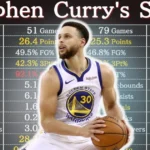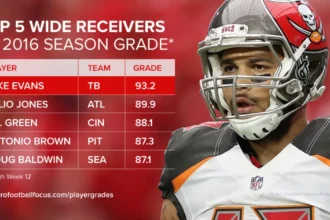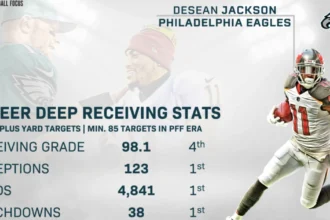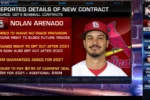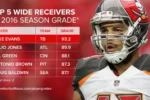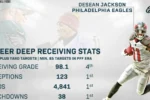Hey there, basketball fans and curious readers alike! If you’ve ever watched a game and marveled at a player who could shoot from anywhere, pass like a wizard, and trash-talk with a grin, then you’re probably thinking of Larry Bird Career Stats. Born in the tiny town of French Lick, Indiana, on December 7, 1956, Larry Joe Bird wasn’t just a player—he was a phenomenon. Nicknamed “Larry Legend” or simply “the Hick from French Lick,” he turned heads in the NBA during the 1980s and early ’90s, leading the Boston Celtics to glory and sparking one of the greatest rivalries in sports history with Magic Johnson.
What makes Bird’s story so special? It’s not just the stats (though we’ll dive deep into those), but the way he played. At 6’9″ with a wiry frame, he wasn’t the flashiest guy on the court—no dunks for days or crossover dribbles that left defenders in the dust. Instead, Bird was fundamentals personified: pinpoint passing, ruthless rebounding, and a shooting touch that could make the impossible look routine. He played with a blue-collar grit that mirrored his Indiana roots, where he grew up in a modest family and honed his skills on outdoor courts.
In this article, we’re breaking down Larry Bird’s career stats in a way that’s easy to follow—no jargon overload, just straightforward storytelling mixed with the numbers that made him a Hall of Famer. Whether you’re a kid just discovering hoops, a grandparent reminiscing about the Bird-Magic era, or someone new to the game, you’ll walk away understanding why Bird’s legacy endures. We’ll cover his early days, season-by-season highlights, a full table of his stats, playoff heroics, and the awards that cemented his status. Let’s tip off!
From Small-Town Dreams to College Stardom
Larry Bird’s journey to NBA immortality started humbly. French Lick, population around 1,800, was no basketball hotbed like nearby Bloomington, but it had one secret weapon: a kid with endless determination. Bird’s high school days at Springs Valley were legendary—he averaged 30.1 points as a senior—but college was where he bloomed.
Bird first enrolled at Indiana University in 1974, but the big-campus vibe didn’t click. He transferred to Indiana State University in Terre Haute, where coach Bill Hodges gave him the keys to the kingdom. By his junior year in 1978-79, Bird was a force: leading the Sycamores to a 33-0 record and the NCAA Championship game. That matchup against Michigan State’s Magic Johnson? Pure magic (pun intended). Though Indiana State lost 75-64, it launched Bird into the spotlight. He averaged 30.3 points and 13.3 rebounds that season, earning National Player of the Year honors.
Drafted sixth overall by the Boston Celtics in 1978, Bird pulled a bold move: He stayed in school another year. The NBA waited, and it paid off. When he finally signed in 1979, Bird wasn’t just a rookie—he was ready to rewrite Celtics history.
Rookie Sensation: Hitting the Ground Running in Beantown
The 1979-80 season was Bird’s NBA debut, and boy, did he deliver. Joining a Celtics team that had limped to 35 wins the year before, Bird infused them with heart and hustle. He started all 82 games at power forward, averaging 21.3 points, 10.4 rebounds, and 4.5 assists per game. That rebounding clip? It led the league, earning him the NBA Rookie of the Year award unanimously.
Bird’s impact went beyond numbers. He helped Boston surge to 61 wins—a 26-game improvement—and a trip to the Eastern Conference Finals. His fadeaway jumpers and no-look passes were poetry in green. Fans adored his competitive fire; opponents feared his pre-game predictions like, “I’m gonna hit 30 tonight—watch.” By season’s end, Bird wasn’t just a star—he was the spark for a dynasty revival.
The Glory Years: MVPs, Rings, and Rivalries (1980-1987)
The early ’80s were Bird’s golden era. Teamed with point guard Tiny Archibald and later Reggie Lewis, but truly shining alongside Kevin McHale and Robert Parish (the frontcourt “Big Three”), Bird led Boston to the NBA Finals three times in four years. His rivalry with Magic’s Lakers defined the decade—think high-stakes drama, trash talk, and unforgettable moments.
In 1980-81, Bird upped his game to 21.2 points, 10.9 rebounds, and 5.5 assists, guiding the Celtics to 62 wins. They swept the Rockets in the Finals for Bird’s first ring. The next year, 1981-82, he averaged 22.9 points and 10.9 boards, but the Sixers edged them out.
Then came 1983-84: Peak Bird. He exploded for 24.1 points, 10.1 rebounds, and a league-leading 6.6 assists, snagging his first MVP. In the Finals rematch with the Lakers, Boston won in seven games, with Bird earning Finals MVP (29.7 PPG in the series). “Larry Legend” was born—remember Game 6, where he dropped 34 points and 11 boards?
The 1984-85 season? Even better. Bird averaged 28.7 points (a career high), 10.5 rebounds, and 6.6 assists, repeating as MVP. Though they lost to the Lakers in the Finals, his 34-point triple-double in Game 1 was iconic. Back-to-back MVPs? Bird joined an elite club.
From 1985-87, injuries nagged, but Bird stayed elite. In 1986, he averaged 25.8 points and led Boston to another Finals (losing to Houston). His 1986-87 line: 28.1 points, 9.2 rebounds, 7.6 assists—MVP No. 3. These years showcased Bird’s versatility: He led the league in steals once (1981-82) and free-throw percentage three times.
Off the court, Bird’s rivalry with Magic humanized the NBA. Their college clash in ’79 set the stage; their pro battles drew millions. Bird once said, “Magic and I respect each other, but on the court? It’s war.” That fire elevated the league.
The Twilight Years: Grit Over Glory (1988-1992)
Father Time catches everyone, and for Bird, it arrived via back pain and heel spurs. The 1987-88 season was solid (29.9 PPG, his career best), but the back acted up. He played only 49 games in 1988-89 before surgery sidelined him.
Bird’s comeback in 1989-90 was inspiring: 24.3 points in 75 games, All-Star nod. But the pain persisted. In 1990-91, he averaged 20.4 points across 74 games, helping Boston to 56 wins. The 1991-92 swan song? 45 games, 20.1 PPG—enough class to retire on his terms.
On August 18, 1992, Bird hung up his sneakers after 13 seasons, all with Boston. His No. 33 jersey was retired immediately. Why walk away? “I couldn’t play the way I wanted,” he said simply. But what a ride.
Larry Bird Career Stats: The Numbers That Tell the Story
Now, let’s get to the meat: Larry Bird Career Stats. I’ve pulled together a comprehensive table covering his regular-season per-game averages across all 13 years. This is sourced from reliable NBA records and presented simply—no overwhelming totals or advanced metrics here, just the basics to highlight his consistency. Notice how his scoring peaked in the mid-’80s, while rebounds and assists stayed rock-solid throughout. Games Played (GP) shows his durability (when healthy), and you’ll see those MVP seasons marked with stars for fun.
| Season | Team | GP | MPG | FG% | 3P% | FT% | RPG | APG | SPG | BPG | PPG |
|---|---|---|---|---|---|---|---|---|---|---|---|
| 1979-80 | BOS | 82 | 37.7 | 47.7 | 27.5 | 83.6 | 10.4 | 4.5 | 1.7 | 0.6 | 21.3 |
| 1980-81 | BOS | 80 | 39.2 | 47.1 | 20.0 | 88.6 | 10.9 | 5.5 | 2.0 | 0.5 | 21.2 |
| 1981-82 | BOS | 59 | 37.0 | 50.5 | 17.6 | 86.2 | 9.9 | 5.8 | 1.7 | 0.8 | 22.9 |
| 1982-83 | BOS | 79 | 37.7 | 49.7 | 25.0 | 84.1 | 10.9 | 5.8 | 1.9 | 0.9 | 23.6 |
| 1983-84* | BOS | 82 | 38.2 | 49.2 | 24.4 | 88.7 | 10.1 | 6.6 | 1.8 | 0.9 | 24.1 |
| 1984-85* | BOS | 74 | 39.5 | 52.2 | 42.7 | 88.3 | 10.5 | 6.6 | 1.6 | 1.2 | 28.7 |
| 1985-86 | BOS | 72 | 38.8 | 49.6 | 31.5 | 86.6 | 9.8 | 6.8 | 2.0 | 0.6 | 25.8 |
| 1986-87* | BOS | 74 | 40.6 | 52.5 | 40.0 | 91.4 | 9.2 | 7.6 | 1.8 | 0.9 | 28.1 |
| 1987-88 | BOS | 76 | 39.7 | 52.7 | 41.4 | 89.9 | 8.8 | 6.1 | 1.6 | 0.7 | 29.9 |
| 1988-89 | BOS | 6 | 35.3 | 50.0 | 33.3 | 80.0 | 6.3 | 4.7 | 1.5 | 0.8 | 19.3 |
| 1989-90 | BOS | 75 | 35.4 | 47.5 | 37.6 | 89.4 | 9.5 | 7.5 | 1.0 | 0.5 | 24.3 |
| 1990-91 | BOS | 74 | 36.0 | 47.7 | 38.1 | 89.3 | 8.5 | 7.2 | 1.4 | 0.5 | 20.4 |
| 1991-92 | BOS | 45 | 33.9 | 50.0 | 40.6 | 86.1 | 6.4 | 4.5 | 0.9 | 0.6 | 20.1 |
| Career | BOS | 897 | 38.0 | 49.6 | 37.6 | 88.6 | 10.0 | 6.3 | 1.7 | 0.8 | 24.3 |
*Denotes MVP season. Key: GP = Games Played; MPG = Minutes Per Game; FG% = Field Goal %; 3P% = 3-Point % (league adopted in 1979-80); FT% = Free Throw %; RPG = Rebounds Per Game; APG = Assists Per Game; SPG = Steals Per Game; BPG = Blocks Per Game; PPG = Points Per Game.
Look at that career line: 24.3 PPG, 10.0 RPG, 6.3 APG over nearly 900 games. Bird shot nearly 50% from the field and over 88% from the line—elite efficiency. His 3-point shooting evolved from spotty (under 30% early) to deadly (over 40% in his later years), proving he adapted with the game.
Playoff Magic: Where Bird Elevated His Game
Regular seasons were great, but playoffs? That’s where legends are forged. Bird’s Celtics made the postseason every year he played, going 87-54 (.617) in his career. He thrived under pressure, averaging 23.8 points, 10.3 rebounds, and 6.5 assists in 164 playoff games.
Highlights? In 1981 Finals, 21.5 PPG en route to the sweep. 1984? 27.5 PPG and Finals MVP. His 1986 Eastern Conference Finals Game 1 vs. the Bucks? 40 points, including a game-winning steal and pass. Bird had 10 triple-doubles in the playoffs, including a 31-16-11 stunner in 1987.
Even in losses, like the brutal 1988 first-round exit to Atlanta, Bird dropped 41 in Game 4. His playoff RPG led the league three times, showing he grabbed boards when it mattered most.
Awards and Accolades: Hardware for the Hick
Bird’s trophy case is stuffed. Beyond three MVPs (1984-86), he snagged three championships (1981, 1984, 1986), two Finals MVPs (1984, 1986), and Rookie of the Year (1980). Twelve All-Star nods, nine All-NBA First Team selections, and All-Defensive Second Team twice.
Post-career? Inducted into the Hall of Fame in 1998, named to the NBA’s 50th and 75th Anniversary Teams. As a coach (1997-2000) and exec (Pacers president), he added Coach of the Year (1998) and Executive of the Year (2012). Bird’s impact? Priceless.
Bird’s Style: Fundamentals, Fire, and Fun
What set Bird apart? His basketball IQ was off the charts—he saw plays two steps ahead, dishing assists that looked accidental but were surgical. Defensively, he wasn’t a shot-blocker, but his anticipation led to steals and rebounds. Offensively, that fadeaway? Unstoppable. And his free throws? 88.6% career, anchoring Boston’s attack.
Bird’s personality shone too. Shy off-court, he was a verbal assassin on it, psyching out foes. His work ethic—endless shooting drills—made him relatable. As he said, “Practice like you play.” That mindset inspired generations.
Legacy: Why Larry Bird Still Matters in 2025
Over 30 years since retiring, Bird’s stats hold up. He’s 30th in all-time scoring (21,791 points), sixth in steals (1,556), and top-25 in assists (5,695). But numbers fade; stories endure. Bird globalized the NBA alongside Magic, paving the way for today’s stars like LeBron and Curry.


